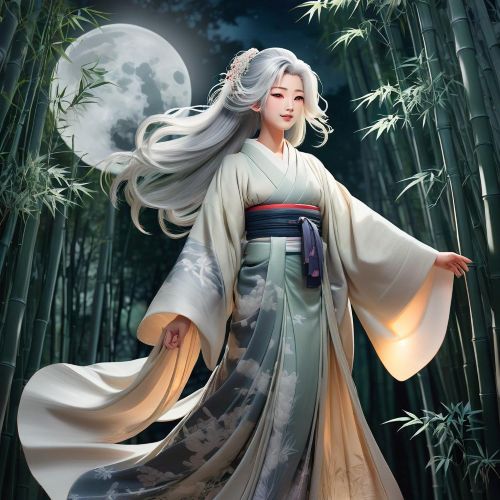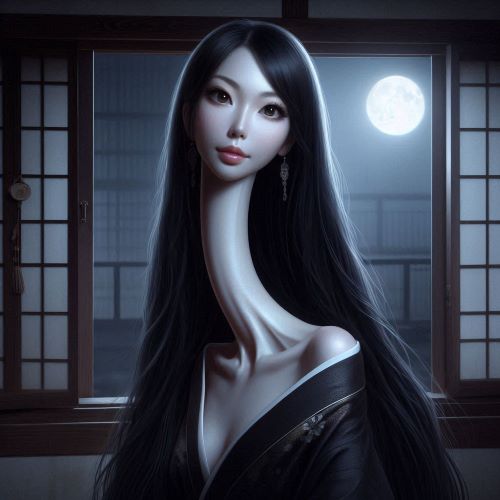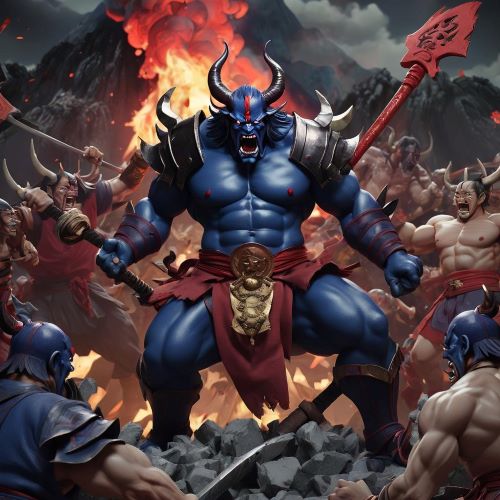Japanese Spirits
Japanese spirits occupy a central role in the rich and diverse landscape of Japanese mythology, embodying a wide range of supernatural entities that influence both the natural world and human affairs. These spirits, known as yūrei, kami, and other entities, are integral to understanding the spiritual and cultural heritage of Japan. They reflect the intricate relationship between the divine, the natural world, and human existence in Japanese belief systems.
In Japanese mythology, spirits are often associated with specific natural elements, such as mountains, rivers, and forests, as well as with ancestral figures and deities. These spirits are believed to inhabit various realms, including the physical world and spiritual dimensions, and their presence is felt through natural phenomena and supernatural events. Rituals, offerings, and ceremonies are performed to honor and appease these spirits, seeking their favor and maintaining harmony between the human and spiritual worlds.
The diversity among Japanese spirits highlights the complexity of Japanese spiritual beliefs. From benevolent gods and nature spirits to malevolent spirits and restless souls, each entity has its own characteristics, roles, and significance. Kami, for instance, are revered as sacred spirits associated with specific places or natural features, while yūrei are spirits of the deceased who have not found peace. These spirits are depicted with rich symbolism and mythology, reflecting various aspects of Japanese culture and values.
Modern representations of Japanese spirits continue to evolve, blending traditional beliefs with contemporary cultural expressions. These spirits appear in various forms of media, including literature, film, and popular culture, bringing ancient myths into the modern era. This contemporary portrayal helps to preserve and adapt Japanese spiritual traditions, making them accessible to new audiences while maintaining their cultural significance. By engaging with these spirits through modern platforms, the legacy of Japanese mythology remains vibrant and influential.
Exploring Japanese spirits offers a profound understanding of the spiritual and cultural dimensions of Japanese mythology. Their stories and attributes provide insights into the beliefs and values that shape Japanese culture, highlighting the deep connection between the divine, nature, and humanity. Whether through traditional practices or modern interpretations, Japanese spirits continue to be a powerful symbol of the enduring legacy of Japanese mythology and its impact on both historical and contemporary contexts.
Japanese spirits occupy a central role in the rich and diverse landscape of Japanese mythology, embodying a wide range of supernatural entities that influence both the natural world and human affairs. These spirits, known as yūrei, kami, and other entities, are integral to understanding the spiritual and cultural heritage of Japan. They reflect the intricate relationship between the divine, the natural world, and human existence in Japanese belief systems.
In Japanese mythology, spirits are often associated with specific natural elements, such as mountains, rivers, and forests, as well as with ancestral figures and deities. These spirits are believed to inhabit various realms, including the physical world and spiritual dimensions, and their presence is felt through natural phenomena and supernatural events. Rituals, offerings, and ceremonies are performed to honor and appease these spirits, seeking their favor and maintaining harmony between the human and spiritual worlds.
The diversity among Japanese spirits highlights the complexity of Japanese spiritual beliefs. From benevolent gods and nature spirits to malevolent spirits and restless souls, each entity has its own characteristics, roles, and significance. Kami, for instance, are revered as sacred spirits associated with specific places or natural features, while yūrei are spirits of the deceased who have not found peace. These spirits are depicted with rich symbolism and mythology, reflecting various aspects of Japanese culture and values.
Modern representations of Japanese spirits continue to evolve, blending traditional beliefs with contemporary cultural expressions. These spirits appear in various forms of media, including literature, film, and popular culture, bringing ancient myths into the modern era. This contemporary portrayal helps to preserve and adapt Japanese spiritual traditions, making them accessible to new audiences while maintaining their cultural significance. By engaging with these spirits through modern platforms, the legacy of Japanese mythology remains vibrant and influential.
Exploring Japanese spirits offers a profound understanding of the spiritual and cultural dimensions of Japanese mythology. Their stories and attributes provide insights into the beliefs and values that shape Japanese culture, highlighting the deep connection between the divine, nature, and humanity. Whether through traditional practices or modern interpretations, Japanese spirits continue to be a powerful symbol of the enduring legacy of Japanese mythology and its impact on both historical and contemporary contexts.





